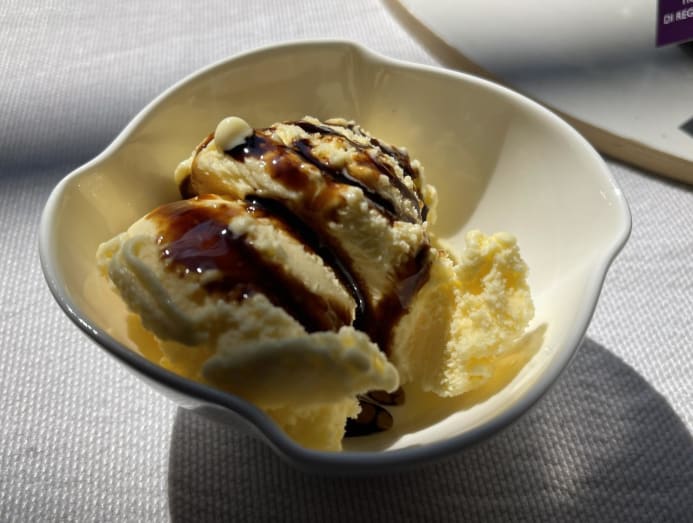A journey through Italy, discovering parmesan cheese and balsamic vinegar
On a recent trip to Emilia-Romagna in northern Italy, CNA Luxury contributor Chris Dwyer witnessed how culinary favourites parmesan cheese and balsamic vinegar are produced.

Parmesan cheese and Balsamic vinegar come from within the same region in Italy, Emilia-Romagna. (Photo: Chris Dwyer)
If countries were ranked on the popularity and quality of the food they produce, then it would be difficult to look beyond Italy as the gold medal winner. Hello pizza, buongiorno pasta – and did someone say gelato?
But as much as the dishes, it's the ingredients which set Italy head and shoulders above the rest of the world. From olive oil to Amalfi lemons, white truffle to tomatoes so tasty that they remind you why they're actually a fruit, the country is the source of no end of fabulous ways to make or improve a meal.
Handily two of the very finest – Parmesan and Balsamic vinegar – come from within the same region, Emilia-Romagna, an agricultural wonderland nestled between the Appenine Mountains and Po River, more or less in the centre of northern Italy. The region is so rich in produce that even within Italy, it is seen as the national cradle of culinary ingredients.
Both Parmesan and Balsamic vinegar are eagerly sought-out by global gastronomes – and hence often struggle to keep up with seemingly insatiable demand. That's also because they carry the historic and storied PDO designation, standing for Protected Denomination of Origin – known in Italian as DOP, or Denominazione d'Origine Protetta. Essentially this guarantees their provenance but also strictly limits their production to a tiny geographical area.
In the case of Parmesan – or Parmigiano Reggiano, to give it its proper name – that means small pockets around Parma, Reggio Emilia, Modena, Mantua and Bologna. My cheese immersion began early one brisk but blue-skied September morning at a Co-operative Dairy called Coop Casearia Castelnovese, just south of Modena (which is also home to Ferrari, Lamborghini, Maserati and Pagani).
There was no doubting I was in the right place as a gleaming silver tanker was pumping thousands of litres of milk through metal pipes, while a fibreglass cow and her calf stood guard outside a shop which would open later that day to cheese-hungry locals.
My delightful guide Silvia – who hadn't given a tour in more than 18 months, due to COVID-19 – joined me as we donned hygienic and protective gear for the visit, marking the first occasion I've enjoyed putting on a face mask in a very long time.
Parmesan has a long history, having been produced since the Middle Ages, initially by Benedictine monks. The Coop Casearia at Castelnovese have been in operation since 1960, collecting milk from 46 suppliers before turning it into Parmigiano. It's a large operation, as demonstrated by a huge first room of 42 copper cauldrons, each containing 1,000 litres of milk in various stages. One cauldron only produces two wheels of Parmesan per day – so yes, that's a cool 500 litres of milk to make one 40kg wheel.
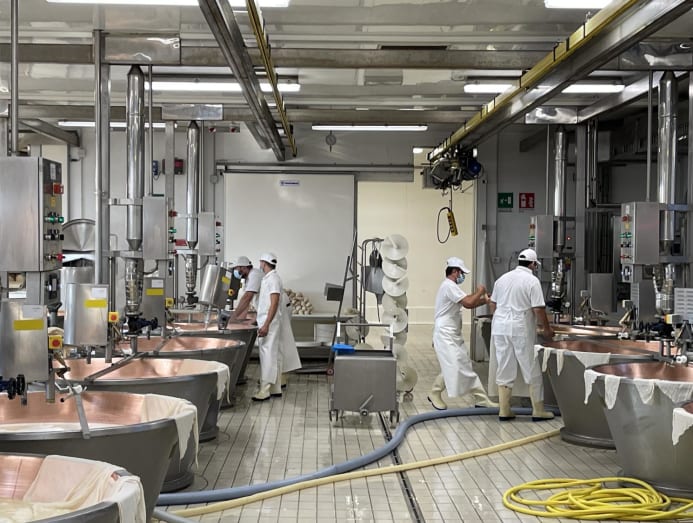
"When they bring in the milk in the evening, they let it stand overnight to let the cream naturally come to the surface. The cream is them pulled away, meaning that Parmigiano is actually made with partially skimmed milk,” Silvia explained.
This skimmed milk from the evening delivery – fear not, the leftover cream is used to make butter – mixes with whole milk from the morning delivery, before enzyme-rich calf rennet is added, as is whey that helps the milk to gently curdle and coagulate into curds, some 24 hours later.
Decked out all in white, the workers break up the curd with a special tool that looks like a vast whisk with a wooden handle, plunging it in and dragging it through.
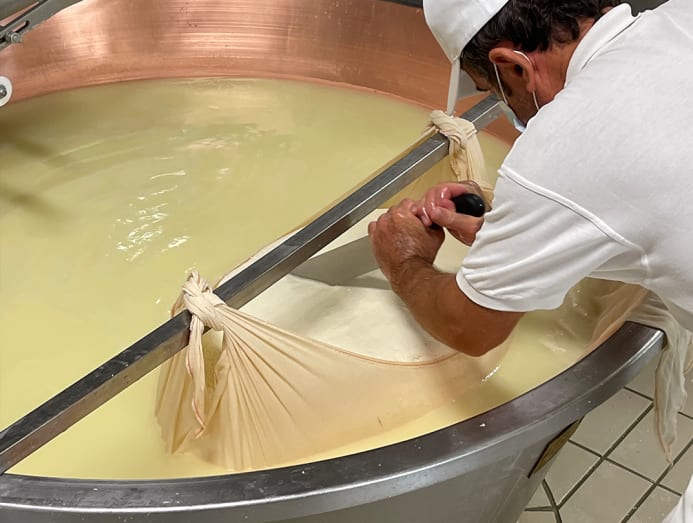
This is not work for the faint of heart, as shown by the next stage as two workers tandem to lift the seriously heavy curds into a muslin cloth, before tying it twice onto a wooden pole and then slicing it in two using a terrifying-looking blade called a spino. The two halves of curds eventually become two 40kg wheels of cheese from one cauldron – before the whole process starts again.
The next room sees the cheese squeezed for a couple of days into metal moulds which give them their distinctive shape, before they are then wrapped in a plastic belt which imprints on the rind everything you need to know.
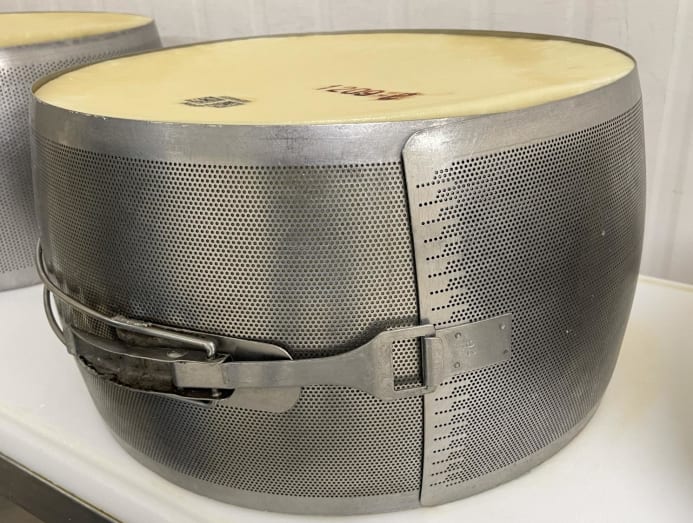
The Braille-like markings show the year and month of production, the registration number of the particular dairy as well as the official seal of the consortium of dairies for Parmigiano Reggiano – essentially an ID card for traceability and integrity of a product which has faced serious challenges from counterfeit versions.
Once they have started “breathing” and producing the rind, the critical salting process begins. They are saturated in salty water – the salt coming from Sicily – for 20 days, taking in the salt through osmosis. Silvia is keen to point out that: “These cheeses are so big that it’s a gentle way to get them salted.”
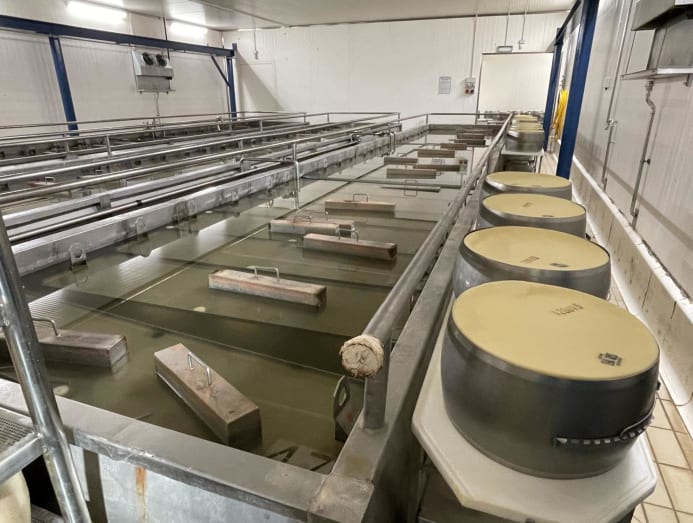
Finally, we get to worship in a true cathedral to cheese. Entering a cavernous hanger sees my jaw hit the floor as I am greeted by an astonishing 35,000 wheels of cheese. From floor to ceiling, they are neatly arranged to age on towering wooden shelving – maybe more of a cheese library than cathedral.
The aroma is intoxicating, the cool silence only interrupted by the occasional whirr of a forklift or the mechanical grind of cheese robots, no less, which remove, lift and turn the cheeses before replacing them.
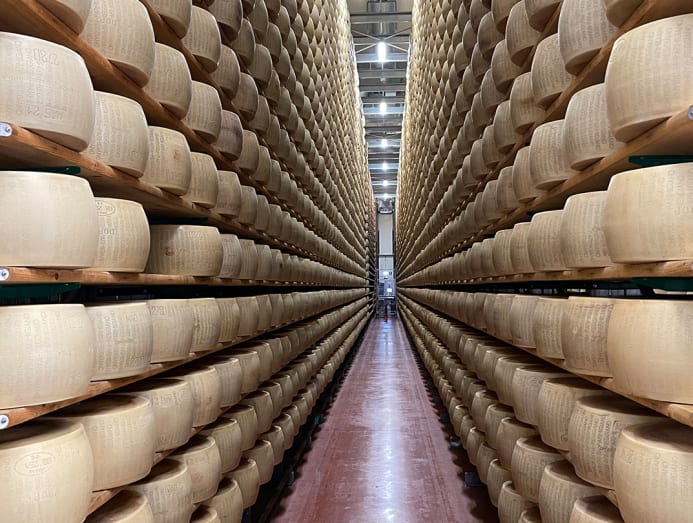
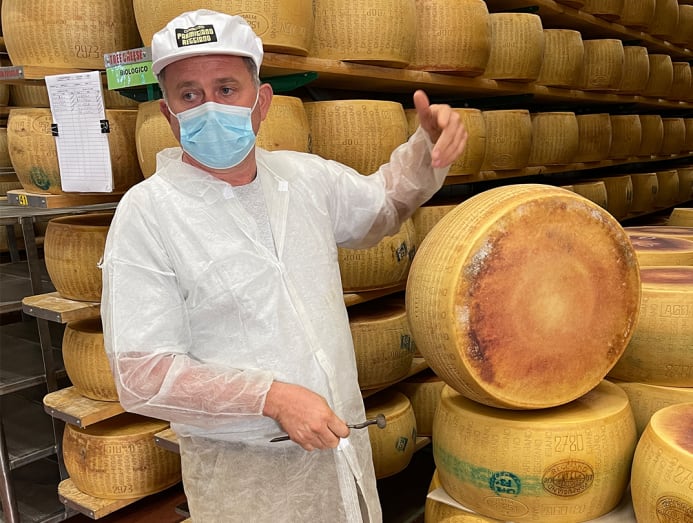
Wheels age in here for a minimum of 12 months, until an expert from the Parmigiano Reggiano consortium visits and checks every single one of them with a special hammer, tapping them and listening for specific sounds which could be signs of organo-lactic mistakes like air bubbles or cracks. If they pass the test, they get a branded stamp and are officially a Parmigiano Reggiano cheese – ready to be grated on your pasta at home, eaten in knobbly chunks or maybe turned into a sublime dish by famed chefs like Massimo Bottura.
From Modena, where his restaurant La Francescana was once voted the world's best, he has championed the cheese like few others, notably in his iconic dish, Cinque eta del Parmigiano Reggiano in diverse consistenze e temperature – The five ages of Parmigiano Reggiano. He uses 24-month in a souffle, 30-month in a mousse, 36-month in a liquid cream, 40-month in a wafer and a whopping 50-month cheese rind used in a broth that he calls “A breath of fresh air”.
Then again, in Castelnovese the 24-month Parmigiano sells for €15 (S$23) per kilogram. In Singapore, it's S$90.
COMPLEMENTARY CONDIMENTS
Another ingredient even more associated with Modena is Balsamico, balsamic vinegar which again has to be produced within a specific geographic region, this time the provinces of Modena and Reggio Emilia.
A combination of climate, terroir and grapes with just the right balance of sugar and acidity combine to allow producers to follow a process which dates back to Roman times.
The name “balsamic” for vinegar dates back to the mid-18th century and derives from the word “balm” or “balsamum” in Latin, referring to a usually aromatic substance which soothes or heals. But many centuries prior, balsamic vinegar was already being drunk, to counteract everything from coughs to the plague.
It was around 1750 when wealthy families in Emilia-Romagna started to craft their own vinegars for their own consumption, ageing them in wooden barrels. At weddings or births, new barrels would be dedicated before passing them down through generations, a symbolic and slow process.
Today, authentic Aceto Balsamico Tradizionale – there are countless cheap, industrially produced imitators – has to be certified by the balsamic consortiums of either Modena or Reggio Emilia. They need to have been produced in one of these provinces using only traditional and artisanal methods, while additives are strictly forbidden.
One producer with a peerless reputation comes at a breath-taking estate with a storied history, Il Borgo del Balsamico. Through wrought iron gates and past a fragrant rose garden, a beautiful terracotta coloured main house dates from the end of the 18th century and an elegant villa from the turn of the 19th. Together they form an idyllic Italian retreat, which is also a unique place to stay for a handful of lucky guests – especially those who get to visit a very special attic room where balsamico is crafted.
Walking in, you stop in your tracks and do a complete double take at the dozens of heady aromas vying for attention in your nose – and brain. It's a remarkable sensorial experience in an historic room where co-owner Cristina Crotti tells the story of how her family came into the business.
From the 1960s onwards, her father was in the pret-a-porter fashion industry with names like Gianfranco Ferre and Jean-Paul Gaultier, but his passion was always balsamico. In the 1970s he bought the estate, complete with an attic room full of the most extraordinary balsamic vinegar, Aceto Balsamico Tradizionale Reggio Emilia. They are housed in a batteria, or a series of casks, made of different woods and arranged in decreasing order of size.
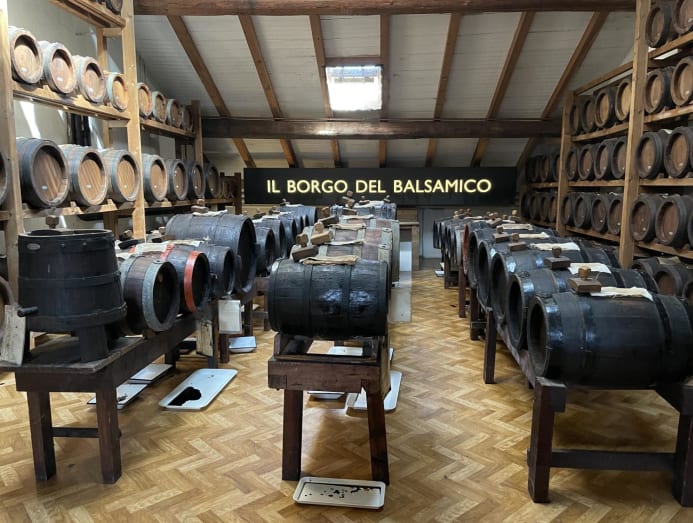
"It's one of the most controlled, certificated products that you can find anywhere in the world, with a production process that is really complex because it follows a method called solera – the same used for (Italian dessert wines) vin santo and Marsala,” said Crotti.
She explains that Tradizionale is made with just one ingredient, grape must, whether from white trebbiano grapes or black lambrusci. But unlike a winery, she's happy to say that the grapes they use are “very ordinary” – complete with skin and seeds.
"We don't use the grapes like a winery but we cook the grape juice for many hours in a stainless steel container at 80 to 90 degrees Celsius for 24 hours so it reduces. After the cooking, we then wait for two kinds of fermentation, alcoholic and acetic, caused by acetobacter bacteria.”
When Cristina's father bought the full, aged barrels in the 1960s they had already been passed down from noble families from decades if not centuries before. But to start a production from scratch, you need a minimum of twelve years.
"You fill the cask to three quarters and then you wait for the first year. This room is very hot during the summer and very cold during the winter so the product evaporates during the summer and stays still during the winter. So after the first summer the product has reduced by more or less ten per cent."
Indeed, looking around the room, all the barrels are indeed very much open with just thin gauze to cover the square openings.
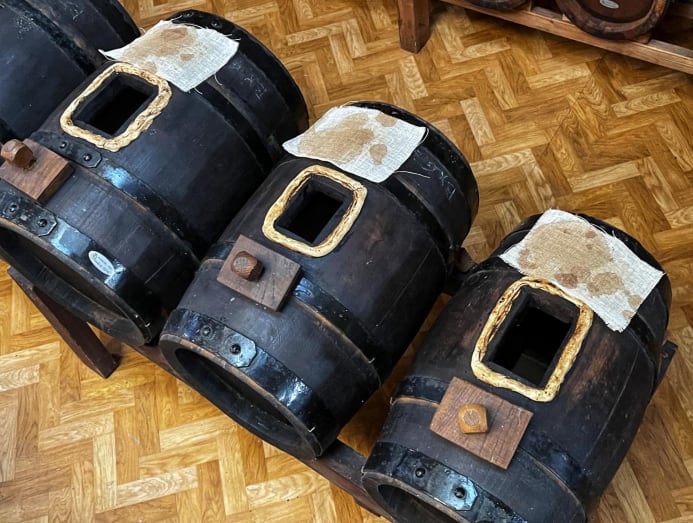
Then once a year, the smallest cask is bottled and then used to top up the largest cask. Hence no cask is ever fully emptied, with the balsamico thickening to a remarkably syrupy consistency through increasing concentration. That's why the finest balsamico can barely be poured – it has to be teased and coaxed out of a bottle.
The complex process provides a headache when it comes to ageing the product, so instead five experts are convened to taste and grade the vinegars in aroma, colour, taste and more – although only about a third of those submitted ever make the grade.
An approximately 12-year-old vintage in Reggio Emilia is affinato, 15-to-20 is vecchio or old, while extra vecchio or extra old can range between 20 and 25 years. In Modena, there are two, affinato and extra vecchio – but handily they all have different coloured caps.
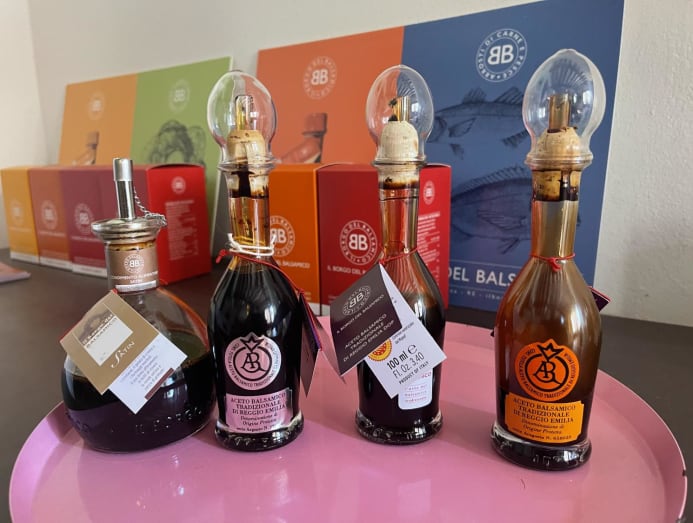
Cristina added: "We never stop the production process. You have an incredible bouquet as every single cask is blended differently and made of one of six different woods – oak, juniper, ash mulberry, chestnut and cherry. The DOP designation certifies a minimum of 12 years old, but some barrels here are easily more than 100 years old – but because of the blending, you cannot state that the product itself is 100 years old. But today, we still only bottle around a thousand 100ml bottles of DOP a year."
Luckily, they have another facility a few kilometres away with more than 500 barrels producing their other ranges, all simply and effectively colour-coded: "Yellow is for salad, orange is for cooking and red is from appetiser to dessert, but just without cooking – because it would be too thick."
They are all remarkable on the palate, the tiniest drops imparting a diverse world of flavours and profiles. But it's on dishes that they truly sing like the finest soprano.
If you've never tried a couple of drops of DOP Aceto Balsamico Tradizionale Reggio Emilia on vanilla ice cream – trust me, it's life-changing.
